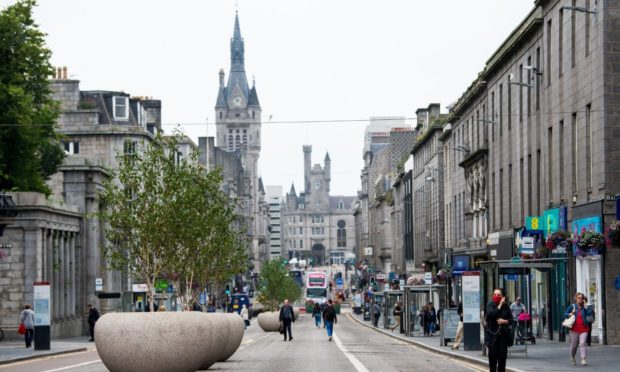Imagine walking through Aberdeen past ‘The Mound of the Brambles’ and ‘The End-Place of Standing-Stones’ and ‘The Settlement of the Tail of the Land’. You’ve just been to Tillydrone (Tulach an Droighinn) and Kincorth (Ceann Coirthe) and Balnagask (Baile nan Gaisg).
Or, out in the country, driving through a village signed ‘Horn Place’, and another marked ‘Bull Field’, and yet another ‘The Shallow Valley of Eichin’.
So, you’ve just been to Banchory (Beanncharaidh) and Tarland (Tarbhlann) and Strichen (Srath Eichin). Or let’s cycle through Inverness: to ‘The Religious Cell of St Bean’ (Kilvean), and to ‘The Rock of the Hill of Birds’ (Craig Dunain) and to the ‘Field of the Horse’ (Dalneigh).
What has happened, of course, is that time and tongue and pen have altered names across the centuries. Whether you go back to Pictish or Cumbric or Welsh or Celtic or whatever origins, most names have ended up like the famous chicken which crossed the road, not knowing how or why she got there. But still, she discovered a bit of grass on that side and pecked on.
What I mean to say is that the ‘modern’ versions of names we see and use are only that: versions. We call the city Inverness in English because that’s how the Invernessians, as they slowly (or rapidly) lost their Gaelic, pronounced the original Gaelic name Inbhir Nis – the name Inbhir meaning ‘a confluence of waters’ or ‘the mouth of a watercourse’ and Nis being the River Ness (the derivation of the word Nis or Ness itself would take another year or two to discuss!) so that the Anglicised word Inverness stands for ‘The confluence of waters of the Ness.’ How’s about that for a sign as you enter the Highland capital. I’m sure it would attract even more visitors as well as keeping the sign-writers in full employment.
I realise there’s no end to it, once you start. If we included all the original names and languages and variants thereof of any place we’d have no room anywhere except for signs. But still, I always like the vernacular and the demotic, and think that how real people in real places (as Iain Crichton Smith put it) speak is important.
It’s why I love the Scots names ordinary fowk gie tae their ain places. Fogieloan instead o’ Aberchirder, Abyne fur Aboyne, Muchtie for Auchtermuchty, Weik for Wick and so on.
For the truth is that every name carries with it a whole cart-load of memories and associations: that house where your granny gave you mince and tatties, or the cinema (the flicks or the flea-house) where you met the love of your life, or the school where Miss Brodie taught you to make that perfect S, shaped like a swan.
The tragedy is that worlds vanish when languages disappear. It’s always a race against time, valuing (and protecting) orchids or the localised word in the face of agricultural and global developments. What does it matter if a small habitat is paved over? What does it matter if a local dialect goes the way of Norn? That’s the way the cookie crumbles, as they say. Except it isn’t: neither environmental nor linguistic destruction is inevitable. They are not the unavoidable consequences of progress. More often, they are the deliberate victims of policies which put profit before everything.
My wife and I were at the local Co-op recently and as we stood outside blethering to a local worthy he suddenly pointed to a blank concrete wall and said: “That’s where the blue gate was.”
He went on to explain that, before the Skye Bridge was built and the main road “developed” and re-routed, that’s where the blue gate was, where they used to go down to see the bonny lassies working in the local hotel. It was the gate to romance, now gone.
Like all of us, that gentleman carries a different topography around in his head from the one that is visible all around. Where there are concrete walls he sees old grassy paths; where there are new houses he sees old fields; where the bridge is he sees ferries sailing backwards and forwards.
Maybe that’s what the ‘second sight’ was all along: the ability to see two (or more) different worlds simultaneously, the one that was gone and the one that is to come. Like seeing a sign saying Aberfeldy and, at the same time, hearing the late, great Petrina Stewart calling it Obar Pheallaidh. Which she then sang about.
Angus Peter Campbell is an award-winning writer and actor from Uist
